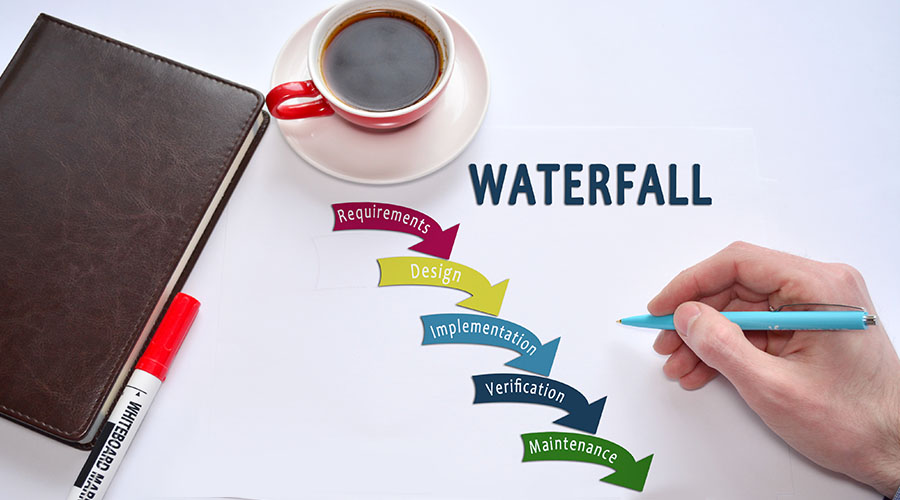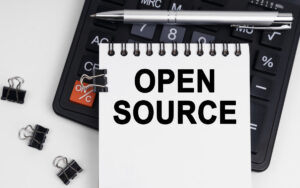Project management is a broad term encompassing several methods and strategies to develop, plan, organize, and execute all phases of a project’s lifecycle. There are many popular project management methodologies, each with strengths and weaknesses and best use cases. The most used strategies include Lean, Scrum, Critical Path, Kanban, Six Sigma, Prince2®, Agile, and Waterfall.
The project manager needs to consider several factors to determine the optimal methodology. Initially, the nature of the project itself must be considered, as specific methods may be better suited. In cases where the advantages of one approach aren’t distinct, the company’s objectives, culture, and preferences should also influence the decision. The waterfall project management methodology, a longstanding industry dominator, remains a preferred choice in many organizations. Additionally, a project management bootcamp provides valuable insights and knowledge for professionals seeking to enhance their project management skills.
What Is Waterfall Project Management?
The waterfall approach to project management methodology is a strategy used to manage all aspects of a project using a linear and sequential process. The name is derived from the linear strategy wherein one category “falls” into the next. Much like a waterfall cascade, one process can start once the other has been completed and approved. Once a stage closes and the next begins, it can be difficult and expensive to revisit a previous stage using this method. Because of this, it is preferred when clearly defined goals and processes are in place. Essentially, it is the opposite approach of agile project management, where adjustments and adaptations are made continuously throughout a project to consider feedback and other alternations as they arise.
Also Read: Understanding KPIs in Project Management
Phases of the Waterfall Project Management Methodology
When following the waterfall methodology, there are five distinct phases. Because returning to a phase is immensely difficult and expensive once completed, anyone implementing this strategy must have a deep, thorough understanding of what is included within each phase.
1. Plan
Like most others, the waterfall methodology for project management starts with an initial planning phase. Through planning, the project manager works with leaders/stakeholders to identify the project’s requirements and the goals they aim to meet. They are loosely defined at this point, and any perceived risks and assumptions are identified and detailed.
2. Design
After the project manager successfully closes the planning phase, the team can begin with the design portion. Here, the basic ideas gathered within the planning phase are narrowed down and transformed into more definitive, actionable concepts. All these factors are then addressed and used to create a project roadmap. This guide clearly defines the budget, timeframe, and overall objectives.
3. Implement
The implementation phase starts after all design work has been hashed out and everyone is on the same page with the project’s direction. After receiving approval to close the design phase, everyone on the team is assigned specific roles and duties. They can begin working on the essential tasks at hand. This phase of the waterfall project management methodology is where most of the time will be spent on each project. While doing the work, project managers will continually document the progress made and mitigate any risks or problems as they arise.
4. Verification
The fourth step when following the waterfall methodology for project management is the verification or testing phase. Moving on to this section verifies that all the work outlined in the design phase has since been completed according to plan. For instance, relying on specific metrics like customer satisfaction allows the project manager to identify any areas of concern. Suppose errors are detected or the project has failed to meet all the objectives outlined. In that case, the team must re-evaluate the project starting at phase one to identify what went wrong before moving on to the final stage of the waterfall method.
5. Maintenance
The maintenance phase is an ongoing process that extends beyond the lifecycle of the initial project and spills over into the whole lifespan of a project/product/service/application. This may last several years as flaws, errors, omissions, and other nuances are addressed to improve functionality. It also involves routine maintenance. The goal is to ensure that the project, over time, continues to meet the needs that it initially set out to fulfill.
Desktop vs. Online Project Management Waterfall Software
Do you want to buy and install project management software on your machines or get a cloud-based subscription instead? Consider the following factors when deciding.
- Accessibility. If your software is installed on a desktop, you only have access to the product if you’re on your machine. Cloud-based software is accessible at any place and at any time.
- Connectivity. Although this is a minor point, it could still matter. You always have access to software on your desktop, but an online product is subject to reliable Internet access.
- Cost. Desktop software tends to be more expensive initially, which can rise sharply if you’re obliged to pay user license fees for every team member. Cloud-based subscriptions typically have very reasonable tiered payment models.
- Security. If security is a big issue, desktop-based software is virtually untouchable. However, online security, such as two-factor authentication, has made huge strides.
Vital Features of Waterfall Software
There are plenty of waterfall software choices available. Whatever you choose, make sure it has the following critical features:
- It can upload documents and requirements efficiently.
- It employs work breakdown structures (WBS) to collect all necessary tasks.
- It lets you work with Gantt charts, which are heavily used in planning and scheduling. Additionally, the software should make it easy to set up dependencies and assign tasks in Gantt charts.
- It allows you to create milestones and phases.
- It should be easy to manage resources and workloads.
- You should be able to easily track a project’s progress in Gantt or a dashboard.
- It generates reports, copies projects, and creates templates easily.
Also Read: 5 Essential Project Management Steps You Need to Know
Advantages of the Waterfall Project Management Methodology
As a more traditional form of project management, the waterfall method has been used for projects within large organizations and software development fields for over 20 years. While it isn’t a suitable approach for all projects, it does offer several advantages over project management methods, including:
Clear Timelines
Because the waterfall approach to project management requires one phase to be completed before moving on to the next, it offers a much more predictable timeline than methods like Agile. Having such distinct phases also helps the team continually assess whether they are on par to meet milestones or need to catch up. They can take this information and adjust their processes to get back on track.
Enhanced Collaboration
With Agile and Scrum methodologies, one of the biggest challenges is keeping everyone involved on the same page. Because continuous evaluations and adaptations are being made, it can take time to keep up. The waterfall method makes collaboration much more manageable because everyone works on the same goals simultaneously before moving on to the next stage.
Reduced Risk of Error
Errors that require teams to restart projects or rework their strategies are costly. A minor mistake can ruin the entire budget and timeline if not caught early. Waterfall project management avoids most errors because all portions are completed before moving to the next stage. This allows most problems to be identified early in the project lifecycle, whereas other strategies do not have this advantage.
Well-Defined Objectives
Before any work is performed, the waterfall method requires all objectives, tasks, and goals to be outlined. This is crucial for keeping all team members committed to the same objectives while ensuring less rework or delays due to misunderstandings or scope creep.
Improved Control of the Project
One of the most daunting challenges project managers face, particularly in large organizations or projects, is losing control of the project. This can happen for many reasons, like misunderstandings, delays, missed milestones, vendor or supply issues, etc. The likelihood of losing control of a project increases with less organized and structured methods. Because the waterfall method is highly structured, project managers have better control over all aspects of the project. When sticking to a budget and goals is a primary concern, this level of control is imperative.
Also Read: Project Management Frameworks and Methodologies Explained
Disadvantages of Waterfall Project Management
Despite the widespread use of the waterfall strategy, there are better options for some projects or industries. Because of this, project managers must ensure that the plan aligns with the needs of the company and the tasks at hand. In some cases, control may be crucial, while flexibility may be needed in others. Let’s explore the most common disadvantages.
Little to No Flexibility
In scenarios where flexibility is necessary, the waterfall methodology for project management is not ideal. Because of its highly structured nature, making changes along the way is inherently tricky. This is particularly true when the changes concern significant project outline or scope alterations.
Limited Involvement of Stakeholders/Leaders
When stakeholders and leaders are interested in being intricately involved in decision-making throughout the project, the waterfall method provides challenges. Because each stage is completed before moving on to the next, there are fewer opportunities for stakeholders/leaders to provide feedback and request changes along the way. Other strategies provide more hands-on involvement and can lead to higher satisfaction.
More Significant Time/Cost Investments
Project management styles that adapt well to changes have an advantage regarding time and cost investments. Because they can adapt at the drop of a dime, little time or money is wasted before errors are identified and remedied. Unfortunately, the opposite is true of the waterfall method. It takes an immense amount of time to complete many of these stages, and once they are finished, it is a hefty investment in terms of both time and money to rework phases to remedy errors.
When to Use the Waterfall Methodology
Although the waterfall methodology is an excellent tool, more comprehensive solutions exist. So, when should you use it?
- The project has a well-defined end goal. Projects with an easily defined goal are perfect candidates for the waterfall method. Project managers can work backward from the goal, creating a clear, detailed path with all the requirements.
- The project has no budget or time limitations. If your team is under the gun with a strict deadline and not counting pennies, waterfall is a great approach since it accommodates tinkering and refining.
- You must create repeatable processes. Since the waterfall model requires documentation at almost every step of the process, it’s easy to repeat the project for new team members. Each step is detailed, so you can easily recreate the process.
Waterfall Software Development Life Cycle
Let’s see the waterfall software development in action. Here’s an example where the team builds an app for a client. Here are the steps the team takes to reach the final deliverable.
- Requirements and Documents. First, the team gathers all the requirements and documentation to get started on the app.
- Project Scope. This is one of the most critical documents in the project, where the team determines the app creation goals: functional requirements, features, costs, deliverables, deadlines, etc.
- Stakeholder Expectations. The team interviews the stakeholders to align the project scope with their expectations and understand precisely what they want.
- Research. The team conducts market research on competing apps, the current market, customer needs, and whatever else is needed to find the unserved niche the app will serve.
- Assembling the Team. The team brings together the people and resources needed to create the app, from the programmers to the designers.
- Kickoff. The kickoff is the initial meeting with the team and stakeholders, covering the information gathered and setting expectations.
- System Design. Next, the team plans the project. They’ve done the research and know what’s expected from the stakeholders. They must create a system design to determine how they will arrive at the final deliverable. The team will specify hardware and software requirements and the system architecture based on the information gathered during the first phase. This step breaks down into two sub-steps.
- Collect Tasks. The team uses a work breakdown structure to list all the tasks necessary for the final deliverable.
- Create a Schedule. With the tasks in place, the team needs to estimate each task’s time. Once the team figures that out, they map them onto a Gantt chart and link dependencies with diligence. Here’s where the team can add costs to the Gantt and construct a budget.
- Implementation. Now, the team is ready to get down to business. This is the phase where the app will be built and tested. The system from the preceding phase is first developed in smaller programs called “units.” Each goes through a unit testing process before it’s integrated. There are six sub-steps here:
- Assign Team Tasks. Individual team members own their tasks and are responsible for completing them and collaborating with the rest of the team. These tasks can be created from a Gantt chart.
- Monitor and Track. While the team executes the tasks, the project manager should monitor and track their progress to ensure the project is progressing per the schedule.
- Manage Resources and Workload. As the manager monitors the progress, issues will inevitably arise, requiring reallocated resources and balanced workloads to avoid bottlenecks.
- Report to Stakeholders. Throughout the project, stakeholders require updates to inform them of its progress. The project manager meets with them and discusses a regular schedule for holding presentations.
- Testing. Once the team has delivered the functioning app, it must go through thorough testing to ensure everything is working as designed.
- Deliver the App. After all the bugs have been addressed, the team is ready to give the finished app to the stakeholders.
- System Testing and Deployment. During this phase, the team integrates all the system units and conducts an integration testing process to ensure the components of your app work properly together. Once the team verifies the app is functioning, it’s ready for deployment.
- Verification. Although the app has been delivered, the software development life cycle isn’t over until some administrative tasks have been completed. There are four sub-tasks here. This is technically the last step.
- Pay Any Contracts. The manager fulfills any contractual obligations to your team and freelance contractors, if any. This pay releases them from the project.
- Create a Template. The manager uses software, such as ProjectManager, to create a template from the project so the team has a head start when beginning another similar project.
- Close Out the Paperwork. The manager ensures all the paperwork has been rubber-stamped and archived.
- Celebrate! The manager assembles everyone and savors the conclusion of a successful project! It’s important for team morale to recognize their hard work and a job well done.
- Maintenance. Is any app development project truly over? Through the course of use by customers, new bugs will arise and must be addressed. So, it’s a given that the team will provide maintenance beyond launch. This ongoing, post-launch phase extends for as long as the contract dictates.
Waterfall vs. Agile Methodology
Waterfall and Agile project methodologies are popular project management styles, and although they share similarities, they also have a few profound differences, such as:
- Workflow. Waterfall project management works on a linear workflow; Agile management prioritizes tasks by their order of importance.
- Customer feedback. Teams using Waterfall present the project to the client upon its completion, while teams employing the Agile method present the project in segments instead of all at once.
- Project planning. With Waterfall, the team plans out the whole project ahead of time, while teams working in Agile plan out sections, and the team reviews each section individually.
Waterfall Project Management Examples
Here are some examples of how different industries could use the waterfall methodology regularly:
- Construction. Waterfall can be helpful in construction because the industry relies on doing work in stages, and Waterfall helps ensure the completion of specific tasks. For example, drywall contractors can only begin work once the wiring is installed.
- Manufacturing. Waterfall helps teams by supporting different manufacturing and production phases and maximizing efficiency. For example, a wearable tech manufacturer could wait until the assemblers finish their work before preparing the project for packaging.
- Software development. Software development uses different coding levels, and waterfall can be beneficial because it effectively organizes those levels. For instance, a software team could set up sequential phases to develop a mobile app, ranging from the initial coding stage to full deployment.
Learn Waterfall Project Management Methodology
Obtaining project management certification through this project management bootcamp, delivered by Simplilearn in collaboration with the University of Massachusetts, shows managers are taking the initiative to advance in their careers. For those not currently in leadership positions, it can showcase that they are ready to take on more responsibility and lead a team to success.
The program takes approximately six months to complete and educates participants on the best project management methodologies, such as the waterfall method. It also delves deep into the technologies used to manage projects, like Jira, Microsoft Office, and risk management software systems.
Project managers can earn an annual average of $92,410, according to Glassdoor.com.
You might also like to read:
What is a WBS in Project Management, and How Do You Use it?
What’s a Requirements Traceability Matrix (RTM), and How Do You Create It?
13 Key Project Management Principles and How to Use Them







